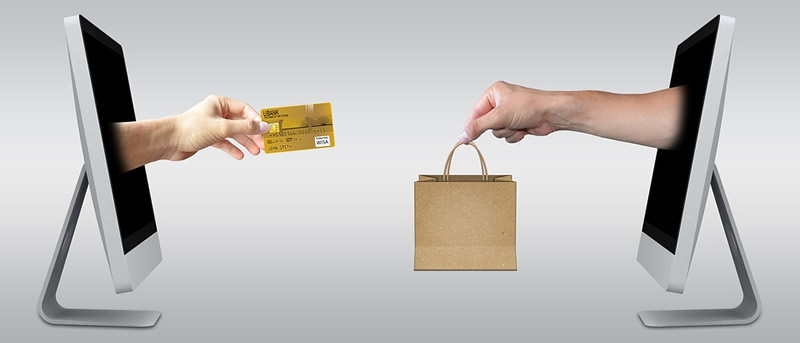E-commerce Trends to Expect in 2019
Companies / Retail Sector Apr 28, 2019 - 02:27 PM GMTBy: Submissions
The online shopping industry is changing. Last year, mobile purchases increased by 55% and are projected to account for $175bn purchases by 2022. Customer expectations are now bigger, with as many as 4 in 10 online buyers expecting retailers to offer same-day shipping services.
If you regularly shop online, some of the changes coming to e-commerce will be highly beneficial to you. Below are some of these trends you should expect.

The Rise of Progressive Web Apps
The golden age of shopping apps appears to be dying quicker than thought before. Consumers are now shopping through Progressive Web Apps. Like websites, PWAs thrive on browsers can be found with a quick Google search.
However, PWAs offer more features. They are apps anyway, developed to be intuitive and user-friendly. They load faster than traditional sites and work on tablets, smartphones and desktop computers. The biggest player in the e-commerce business with a PWA is Aliexpress, the Chinese giant retailer.
For retailers, adopting PWAs as a replacement of mobile apps leads to faster loading speeds and better experiences for customers. It also means customers may stay longer on their platforms and lead to better sales if their products and customer services are equally great.

AI Chatbots
Chatbots have been around for a while. On big shopping sites, however, the bots have hardly been present. This is not entirely a bad thing as companies like Amazon prefer to have humans communicate with customers over chatbots.
eBay is the biggest retailer with a known chatbot. The company's bot is designed to help customers shop more conveniently. The bot is also customized to help shoppers find the best deals for different items on the platform.
Chatbots use Artificial Intelligence to use the information you send to them to help you shop better. eBay’s shopbot accepts requests through texts, talking or pictures of the items you need. Besides eBay, most e-commerce businesses also use bots to interact with customers.
Amazon's and Google AI assistants are technologies also to watch in the e-commerce scene. While some businesses may find chat bots more feasible, Amazon believes Alexa offer a better shopping experience. Voice assistants are easier to communicate with any. And in the case of Amazon, you can make an order without even typing anything on your computer.
Improved Human Conversations with Customers
Chatbots and shopbots will continue to increase as e-commerce stores look for ways to handle complaints from customers. However, many user experience designers believe that retailers will invest in the element of human conversations.
As consumers continue to rely on online shopping, they expect to experience conversations with humans before purchasing. They want to ask questions about products and get real replies from the sellers.
Traditionally, testimonials and user reviews were customers’ best tools for evaluating the quality of products. Buyers still trust review sites like https://www.bestreviews.guide/ to find best-rated products faster. However, they are increasingly craving for human conversations.
This won't be easy for many eCommerce stores especially large retailers like Amazon and eBay. With thousands of requests being made every day, it will be interesting to see how stores handle customers' interest in communicating with store owners.
Increased Shopping Personalization
Most of the technologies coming to the e-commerce business are geared toward increasing custom shopping experiences. Chatbots, progressive web apps, increased human conversations—all these trends will help retailers offer more personalized deals to customers.
There are many more ways retailers aim to improve their customer services. The biggest of them all is to collect customers’ data and use it to customize offers. Every time you visit a shopping site, data about what you search is collected. Retailers then analyze your data and place recommendations of products you should buy the next time you log into your shopping account.
For shoppers, shopping personalization should have come a long time ago. While retailers don’t always recommend interested products accurately, you get to find products you would love quicker. If it also helps you find better quality products, you are more likely to be a loyal customer to the retailer.
Enhanced Product Visualization
Ever wanted to purchase a couch but doubted it would rhyme with your home’s interior décor? Technology may soon clear your doubts. Thanks to Augmented Reality, and 3D imaging technologies, you can view more realistic images of products you’d want to purchase.
Of course, 3D imaging isn’t as realistic as viewing the products in real life—but it comes close. If it's sneakers you want to purchase, enhanced visualization lets you view the shoes as they would appear in real life. Their sizes are enlarged and every part is increased to give you a better viewing experience.
Enhanced product visualization has also been spreading to e-commerce video descriptions. Instead of aggressive sales pitches, retailers are now using immersive and detailed infomercials to communicate with customers.
Installment Payments to Increase
Installment payments models didn’t seem feasible until Apple started doing them. Walmart joined in and many online stores now accept partial payments for particular products. Most stores claim the business models have increased conversion rates and customer loyalty.
When you want to purchase a $1000 king size bed and don’t have the money upfront, wouldn’t you wish you could split your payments? Usually, installments amount to a higher overall cost than buying upfront but they help you get what you want even when you don’t have enough money.
Most stores make it easy to order installment-based products. You may be required to pay a deposit, but the rest of the money can be paid using flexible premiums. You also get automatic reminders ahead of time and can pay the remaining amounts in full should you get the money suddenly.

To Conclude
2019 marks the beginning of a new era in the e-commerce business. Shopping apps, which took the world by storm a few years ago, are losing popularity. Instead, progressive web apps are gaining track as the best platforms for mobile shoppers.
Artificial Intelligence is gaining momentum in the online shopping scene through chat boxes and AI assistants. However, websites are also paying attention to the human element of conversations.
By Ronny Martelli
© 2019 Copyright Ronny Martelli - All Rights Reserved
Disclaimer: The above is a matter of opinion provided for general information purposes only and is not intended as investment advice. Information and analysis above are derived from sources and utilising methods believed to be reliable, but we cannot accept responsibility for any losses you may incur as a result of this analysis. Individuals should consult with their personal financial advisors.
© 2005-2022 http://www.MarketOracle.co.uk - The Market Oracle is a FREE Daily Financial Markets Analysis & Forecasting online publication.



